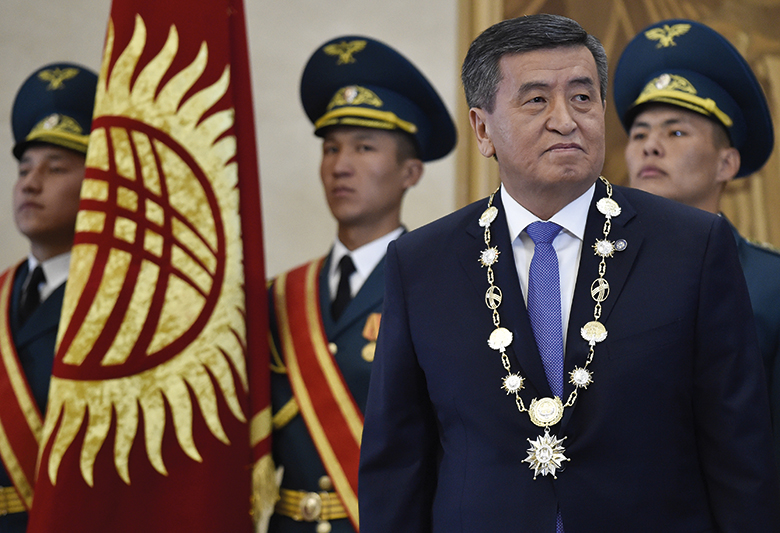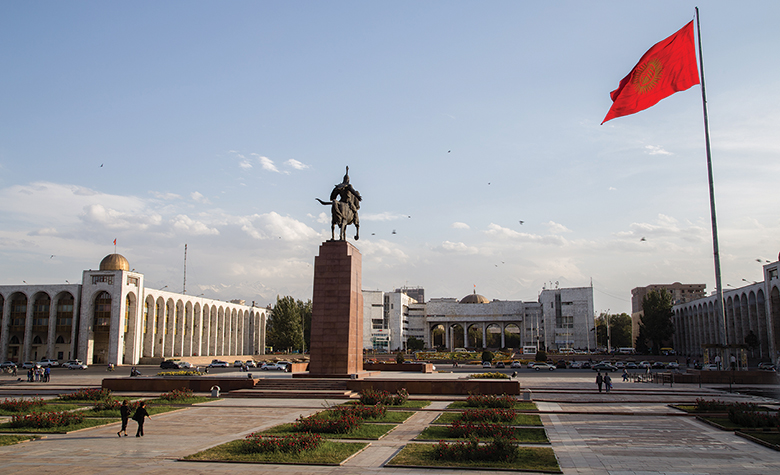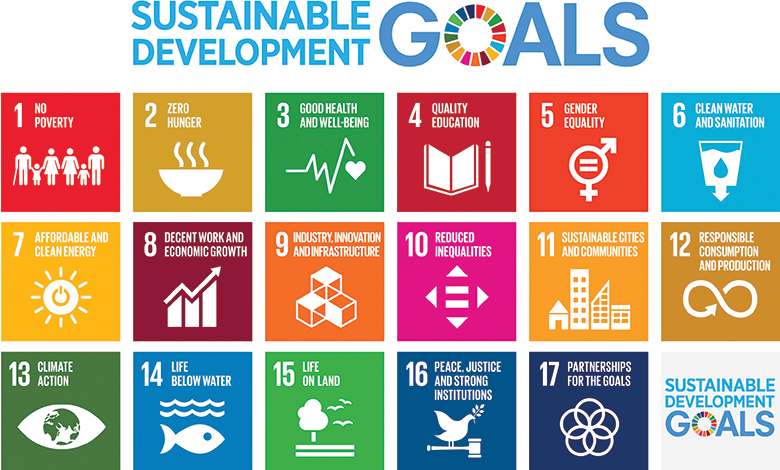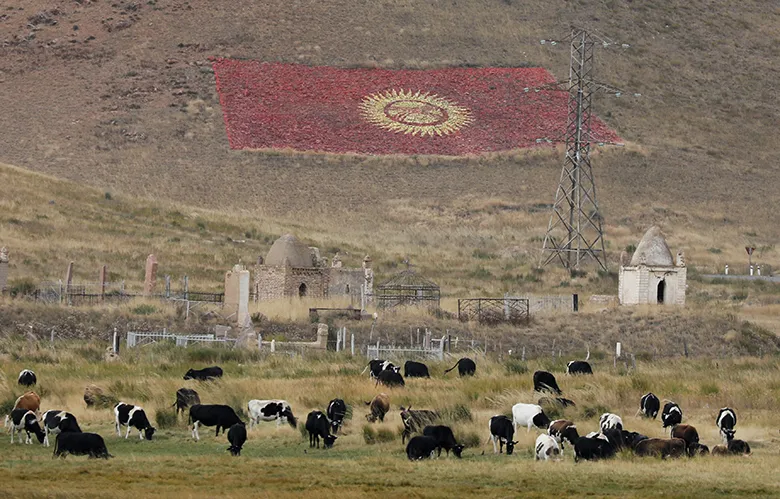
UN Sustainable Development Goals
|
IN ADDITION |
|
|
|
One of the biggest challenges for responsibly-minded microfinance firms is making credit affordable for their low-income customers. Providing loans to unbanked populations is not a cheap business. It is labour intensive and, if the client base is rural, it usually requires a large physical network in often inaccessible areas.
Funding costs also tend to be high. The risk profile of microfinance institutions (MFIs) makes bank financing pricey, while the ample funding on offer from development banks and other international institutions is nearly always in hard currency. By the time this has been swapped and hedged, costs can soar.
Retail funding, which would be cheaper, is often not an option due to the understandable reluctance of policymakers to allow lightly regulated entities to take citizens’ deposits.
In Kyrgyzstan this problem became particularly acute after the Russia crisis in 2014. As the som followed the rouble on its downward spiral, local interest rates spiked and the central bank imposed swingeing restrictions on lending in hard currency.
For two of the country’s largest microfinance firms, the solution to rising funding costs was to transform themselves into banks. The Kyrgyz arm of US microfinance firm Finca obtained a banking licence in 2015, while leading rival Kompanion followed suit in January 2016.
Both the newly minted banks promptly began targeting wealthier savers in Kyrgyzstan’s larger cities, with notable success. By the end of last year, client deposits accounted for 40% of Finca Kyrgyzstan’s financing, while its cost of funding was down to 12.7% from 20.5% in 2015.
In the past 15 years we have had many shocks, including two revolutions and a major devaluation but no major decline in asset quality – Maksatbek Ishenbaev, Bai-Tushum Bank
Kompanion Bank was slightly slower off the mark but had raised Som1.1 billion ($15.9 million) by the end of December, a total that is expected to double or even treble this year, according to chief financial officer Azamat Maksytbekov.
As Finca’s chief operations officer Nazaket Aslanova notes, however, the transition to bank status was not all about cutting costs. The two firms were also keen to broaden the scope of their financial inclusion work in central Asia’s most mature microfinance market.
Since the mid 1990s, Kyrgyzstan’s combination of a large rural population, low banking penetration and a functioning democracy – a rarity in the region – have attracted all the usual suspects in international development, from the EBRD and IFC to the Aga Khan Foundation and the Islamic Development Bank.
The success of Finca and other microfinance pioneers also spawned a host of smaller local imitators. By the start of this decade, Kyrgyzstan had close to 600 microcredit providers. A tightening of regulations in 2011 weeded out many of the weaker players, but the country still boasts around 160 operators.
“Access to finance is not an issue in Kyrgyzstan today,” says Tolkunbek Abdygulov, chairman of the country’s central bank.
Long way to go
From a broader perspective, however, the country still has a long way to go on financial inclusion. According to the latest Global Findex survey, published in April, just 6% of the population used a debit card to make a purchase in 2017, while 89% of those selling agricultural products were paid in cash.
Policymakers have made efforts to address this, increasingly providing pensions and government salaries through bank accounts. Yet while this has helped to boost the number of Kyrgyz with bank accounts – from 4% in 2011 to 40% by 2017 – locals say the vast majority of recipients only use them to withdraw their cash on payday.
Luiza Mamarasulova, who leads the IFC’s advisory on financial inclusion in Bishkek, says that in many cases the recipients of state payments do not even realize they have bank accounts. There is certainly little sign of any interest in using banks for deposits or savings. According to the Global Findex survey, 24% of Kyrgyz reported saving money in 2017 but only 3% used a financial institution.
|
|
For the older generation, the problem is a lack of trust in banks. Kyrgyzstan’s banking system is one of the strongest in central Asia and has not seen a failure since the start of the century – unlike neighbouring Tajikistan, which has been struggling with a banking crisis for the last two years.
Nevertheless, says Maksytbekov, older Kyrgyz citizens still have vivid memories of the calamitous effects of the rouble devaluation after the fall of the Soviet Union, as well as of a succession of bank failures in the 1990s.
“Many people lost their savings, so people stopped using banks completely and we lost the savings culture,” he says.
As a result, the younger generation do not understand banking services or why they need a bank account, he adds.
“They say: ‘But I can do everything by cash’. No one educates them that it’s safer to keep money in a bank account than under the mattress, and you can earn interest.”
Abdygulov says the problem is particularly acute in rural areas: “People there still today don’t have the culture of putting money in financial institutions. They prefer to invest it in livestock.”
The hope is that the new microfinance banks can persuade clients of the benefits of saving as well as borrowing. Unlike most of Kyrgyzstan’s banks, which have traditionally focused on Bishkek and the southern capital, Osh, Finca and Kompanion have extensive rural networks.
They also have the advantage of having gained the trust of rural customers through their microfinance work. Finca has already had notable success in leveraging this to encourage clients to make deposits – 44% of the bank’s depositors are also borrowers.
The new banks also want to encourage clients to use digital services rather than cash, particularly for payments. Kyrgyzstan is a remittance country. More than 10% of the population work in Russia; the money they send back accounts for a third of GDP.
It is also extremely mountainous, with the Tien Shan and Pamir ranges covering 90% of its geographical area.
“In a country like Kyrgyzstan, where many villages are cut off for three to four months every winter, everyone recognizes that digital payments and services are the future for financial services provision,” says Mamarasulova.
For many, the obvious solution is e-wallets, which have proliferated in Kyrgyzstan recently and are being used for lending as well as payments.
We are a small country, so if every bank has its own e-wallet, that may reduce the potential benefits for both companies and customers – Azamat Maksytbekov, Kompanion Bank
First MicroFinance Company (FMFC), a mid-sized microlender owned by the Aga Khan Agency for Microfinance, is trialling a digital loan facility via the country’s largest e-wallet, Kyrgyzstan Investment and Credit Bank’s Elsom. Kompanion is looking to follow suit in partnership with e-wallet Umai, as is another microfinance focused lender, Bai-Tushum Bank, through a tie up with Mobilnik.
Unfortunately, the enthusiasm of Kyrgyz banks, telcos and tech firms for e-wallets has yet to be matched among the wider population. Even Elsom has struggled to gain traction despite substantial investment over four years, while in rural areas usage of any mobile payments mechanism is almost unheard of. This is partly due to low smartphone penetration outside large cities but mostly to the lack of payment agents. In areas with no banking infrastructure, e-wallet usage requires a network of local businesses – such as shops and cafes – that are willing to take and pay out cash.
And, while everyone in Bishkek banking circles is talking about agent networks, all acknowledge that creating them will be challenging. According to Mamarasulova, the main issue is transparency.
“Many businesses operate in the grey economy, so they are reluctant to put transactions into electronic format,” she says.
In theory, Kyrgyzstan’s post office could help. With 900 outlets across country, it has a much wider network than even the largest microfinance firms. The IFC is currently working with the World Bank on a project to improve the institution’s financial management and upgrade its IT systems. Locals note, however, that more will be needed to equip its outlets to act as payment agents.
“The standard of people working in the post office at the moment is very low,” says one Bishkek banker. “They will need to do a lot of work on staff training.”
The other problem with Kyrgyzstan’s current crop of e-wallets is the lack of interoperability. Operators are protective of their products: payments can usually only be made from and to a single bank.
Mamarasulova says the central bank should regulate for a more open system: “It is up to them to create transparent rules of the game and make sure everyone is equal.”
Kompanion Bank’s Maksytbekov agrees.
“We are a small country, so if every bank has its own e-wallet, that may reduce the potential benefits for both companies and customers,” he says. “A common e-wallet and agent network that all banks can join would have more chance to be successful.”
Financial education
At the same time there is widespread recognition that simply fixing the logistics will not be enough to improve the take up of financial services in Kyrgyzstan. There is also an urgent need for financial education on everything from budgeting to deposits to digital services.
Some banks are already active in this area. Finca launched a financial literacy programme in 2012, initially to tackle the problem of parallel lending, where borrowers were taking loans from multiple institutions. The initiative began with classroom sessions in rural villages and subsequently expanded to cover schools and universities. Over the last six years the firm has provided financial education to more than 44,000 people in Kyrgyzstan.
Kompanion is working on a similar programme designed to educate rural populations about the range of options offered by financial institutions.
“There is a huge need for additional services among these clients, but they are not aware of them yet,” says Maksytbekov. “They don’t know that there are ways to do things more efficiently.”
He notes that for many Kyrgyz the preferred method for domestic payments is still to send cash by taxi.

Kyrgyz president Sooronbay Jeenbekov. The government has launched an education drive to encourage saving
Policymakers are also doing their bit for financial literacy. The Kyrgyz government began an education drive in 2016 aimed at three age groups: children, the middle-aged and the elderly. Comic books illustrating the importance of saving have been produced for kids, while adults have been targeted with educational TV shows.
Officials are particularly keen to raise awareness of the dangers of over-indebtedness. This is in contrast to much of the Kyrgyz financial community, who no longer see this as a problem. Bankers estimate that around a fifth of micro borrowers today have loans from more than one institution, down from more than 40% in 2011, and most are comfortable with the current level.
“By comparison with other countries it’s not high,” says Finca’s Aslanova. “It’s fine.”
Support for this viewpoint comes from the very strong asset quality of Kyrgyzstan’s larger microfinance lenders. Finca and FMFC, for example, both boast non-performing loan ratios of below 1%.
As part of the financial literacy programme we need to make a movie showing the bad examples of what can happen to people who take out parallel credits – Tolkunbek Abdygulov, National Bank of the Kyrgyz Republic
Maksatbek Ishenbaev, chief executive of Bai-Tushum Bank, says this is a uniquely Kyrgyz phenomenon. “In the past 15 years we have had many shocks, including two revolutions and a major devaluation but no major decline in asset quality,” he says. “That is because we have a very strong payment culture in Kyrgyzstan – possibly because the country is so small that everyone knows everyone else.”
While this payment discipline may be good for banks, however, Mamarasulova says it can be disastrous for debtors. Surveys by the IFC in some of Kyrgyzstan’s most over-indebted regions found that struggling borrowers were cutting back on basic nutrition to meet their obligations. They also showed that many applicants lied about their financial situation and the reason for taking a loan.
Central bank chairman Abdygulov points to the Kyrgyz tradition of lavish family parties – a guest list of 300 is the norm for weddings and funerals – as one of the main drivers of unsustainable borrowing.
“This type of parallel credit is particularly bad because borrowers have no hope of recouping their money,” he says. “The only way to repay their original loan is to take out another one and it then becomes a vicious cycle.”
Kyrgyzstan’s ministry of culture recently ran a TV ad designed to discourage this practice. It highlighted the plight of a family whose children had to leave home and work in Russia to pay off the debt for a wedding party.
“I think as part of the financial literacy programme we need to make a movie showing the bad examples of what can happen to people who take out parallel credits,” adds Abdygulov.
Digitalization
Policymakers are also keen to join the push for financial digitalization. Recent initiatives to promote the use of multichannel banking include the removal of customs duty on imports of banking equipment, as well as the introduction of a law requiring all businesses in Kyrgyzstan to accept payment by card.
The lacklustre response to the latter measure, however, demonstrates the scale of the task facing digital advocates. A year after the legislation was passed, bankers report that point-of-sale (PoS) terminals remain a rarity outside the bigger cities.

Ala-Too Square in the capital Bishkek
Even in Bishkek it can be difficult to pay by card – as Euromoney can attest, having had to go in person to one of the country’s leading travel agents to hand over a wad of dollars for a weekend trip into the mountains. Making an excess baggage payment at the airport also required a 15 minute wait while a disgruntled airline employee located a PoS terminal somewhere in the recesses of the building.
But if take-up of digitalization by bank clients and businesses has been slow, lenders are already using it to help clients. The leader in this field is Mol Bulak, the holdout among the big microfinance firms. By far the largest of the remaining MFIs, the company has 127,000 clients and 112 offices but has so far resisted the temptation to apply for a banking licence.
Executive director Ainagul Samidinova says the firm is happy with its current business model and insists that being unable to take deposits has had no effect on its competitiveness.
“We regularly review the prices of our competitors and for the products we provide, such as unsecured micro loans, we don’t see much difference in pricing,” she says.
She also rejects suggestions that, as a socially responsible lender, Mol Bulak should encourage clients to use other financial products.
“We do not see it as our role to integrate them into the banking system through opening accounts or issuing credit cards,” she says. “That work is done by commercial banks.”
In technological terms, however, Mol Bulak has the edge on most of its microlending rivals. The firm’s field officers can already process loan applications within hours onsite using tablets and a mobile app – a model that Finca, Kompanion Bank and FMFC are looking to emulate.
At present the only other lender using tablets for credit decisions is Bai-Tushum, the first of Kyrgyzstan’s microfinance players to obtain a banking licence back in 2012. Unfortunately, being a pioneer turned out to be a curse rather than a blessing. The transition proved tougher than expected and turned a profitable microfinance business into a loss-making bank.
Ishenbaev, who was brought in at the end of last year to turn the bank around, says the main mistakes were moving too fast into new and poorly understood segments, such as small and medium-sized enterprise lending, and failing to equip employees to deal with the demands of a banking environment.
Kompanion Bank’s Maksytbekov agrees that staff training is key for any firm making the transition from microfinance firm to bank.
“It’s not easy to switch from a credit culture to a deposit culture,” he says. “We’ve put a lot of effort into educating our people and I still feel that not everyone in the bank appreciates the need to attract deposits.”
With the help of the EBRD, Bai-Tushum recently completed a year of intensive staff training and is now gearing up for a new expansion drive. As well as investing heavily in technology, the bank is rapidly expanding its offering for SMEs. It recently added supply chain financing and is now eyeing trade finance.
Nevertheless, Ishenbaev insists that the micro segment will remain a big part of the bank’s portfolio.
“The margins are much better, plus our shareholders are eager to support rural areas,” he says.
Bai-Tushum’s owners include US development organization ACDI/Voca, as well as impact investors Responsibility and Bamboo Finance.
Ishenbaev also notes that most of the bank’s current SME clients were originally micro borrowers.
“They are now developing with us,” he says.
Kompanion and Finca also cite the ability to serve micro businesses as they grow as one of the reasons for becoming banks. Both have ramped up their maximum loan size now that they are no longer limited by the regulations on MFIs. Kompanion Bank offers SME loans of up to $100,000 equivalent.
The two lenders are also expanding into other areas, such as credit cards and consumer lending for salaried employees. Finca recently began piloting PoS loans in and around Bishkek, and Kompanion is considering following suit.
Nevertheless, both banks are keen to stress that microfinance remains their priority. Maksytbekov notes that, while Kompanion Bank can now lend up to $100,000 equivalent to SMEs, its average loan size is still around $1,000.
Aslanova says Finca’s main focus is on leveraging its banking licence to improve its offering for low-income clients.
“We are always looking at how we can make loans cheaper and more accessible, whether that’s by reducing costs, by growing our deposit base or by using technology,” she says. “We are still above all a microfinance provider serving rural populations. It is just that now we can offer a wider range of financial products.”
Certainly there is still ample room for growth in microlending in Kyrgyzstan. Even after two decades of work by MFIs, this year’s Global Findex survey suggests that barely 10% of Kyrgyz adults have ever borrowed from a financial institution. Samidinova notes that, even today, 48% of Mol Bulak’s new clients have no previous experience with the formal financial sector.
“We see huge demand from clients,” she says.
So attractive is the market that established microcredit providers are starting to face increasing competition from mainstream banks. Over the last few years the likes of Aiyl Bank, Bank of Asia and Bakai Bank have started offering group lending, traditionally the preserve of MFIs.
Whether or not the ever-increasing availability of credit can foster broader financial inclusion remains to be seen. Mamarasulova takes an optimistic view. For one thing, she notes that borrowing can be useful in teaching financial discipline.
“When you have to repay a loan, you learn to put a certain amount of money aside each month,” she says. “The task then becomes to help the person to keep up that behaviour, which is something that banks are well placed to do.”
She also hopes that the experience of micro borrowing can help overcome resistance among poorer and rural Kyrgyz to interacting with financial institutions.
“Thanks to the push on lending, we have a lot of people who have had a positive experience of taking and paying off a loan,” she says. “This means they have already been part of the formal financial sector, so it should be a bit easier to encourage them to try another service.”
It is also important to remember that financial inclusion campaigners are not operating in a vacuum, adds Mamarasulova.
“People in Kyrgyzstan are already using financial services, whether they are asking a bus driver to take money from one city to another or getting a loan from a pawnshop,” she says. “To bring those people into the formal financial sector, we just need to develop services that are affordable and efficient, and then explain why it is cheaper and safer to use a financial institution.”
Mol Bulak opens Islamic window for micro clients
Islamic finance has been slow to gain traction in Kyrgyzstan. So far only two banks and two microfinance institutions have gained a licence for an Islamic window from the central bank.
Nevertheless Mol Bulak, the country’s largest microcredit firm, sees scope for rapid growth in the market.
“Many people in Kyrgyzstan can’t take out a traditional loan because of their religious beliefs,” says Ainagul Samidinova, the firm’s executive director.
This is borne out by the latest Global Findex survey, which suggests that 8% of Kyrgyz adults would not open accounts with conventional banks for religious reasons.
Mol Bulak began offering Islamic finance in January 2017, and Samidinova says initial take up has been strong: “We are seeing demand for this product.”
Kompanion Bank also has an Islamic subsidiary, based in the southern Kyrgyz capital, Osh.
At present it has less than $1 million equivalent in total assets but CFO Azamat Maksytbekov sees the segment as a growth area.
“ There could be big potential in that market,” he says.
UN Sustainable Development Goals: The keys to responsible banking?
These are the areas that the United Nations says banks need to consider when accepting their responsibilities in shaping and financing a sustainable future.







